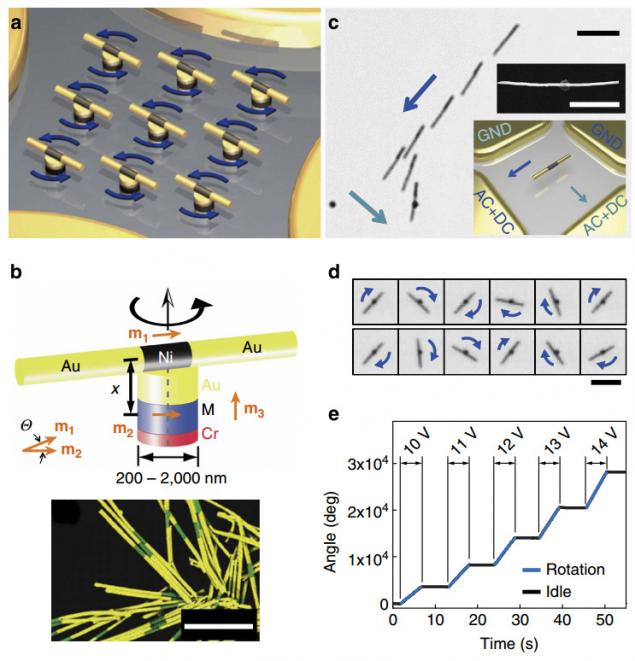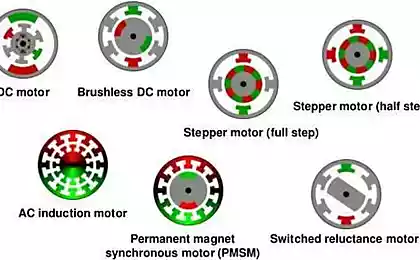1522
The smallest and fastest nanomotor: 1 mm, 18,000 RPM

Experts from the University of Texas at Austin collected the smallest and fastest in the world of artificial motor . According to the developers, the engine size of 1 micrometer rotated up to 15 hours at a speed of 18,000 RPM (300 revolutions per second), carrying more than 240 000 cycles. This is a significant achievement because previous models such motor is running more than 5000 RPM for a few hours.
Nanomotors made of three basic components: a tiny wire Au / Ni / Au works as a rotor magnet being located on Au / M / Cr quadrupole system of four microelectrodes connected by pairs. They act as the stator. In the composition of the magnet M - is a magnetic material, such as nickel and cobalt. The top layer of gold is used to adjust the distance between the magnet and the nanowire to change the magnetic attraction on the rotor.
Three-layer magnet - a key component of the system. Magnetic attraction is regulated so precisely that the magnet can attract the wire to the ground, but not so much to prevent its rotation.
Engineers managed to solve two key problems: automatic assembly nanomotors and control their movement. Assembly is done by using the new technology "electric tweezers," which allows you to place the nanoparticles in the substrate on any trajectories with a precision of 150 nm by controlling the angle and speed of a pulsed current (see. Illustration c i>).

The experiment showed that it is possible to remotely change the angle of nanomotors and control the speed of rotation of the rotors. Including group driving motors simultaneously. The speed of rotation depends on the square of the electric field.
Developing effective nanomotors - the most important step towards the creation of nanoelectromechanical systems (NEMS), which in the future will perform medical operations. For example, to carry out the injection of medicines inside the human body, or even seek out and remove the diseased cells from the body, as shown in the illustration, University of Texas at Austin.

Scientists emphasize that the maximum speed checked purely as an experiment to evaluate the reliability of the design. In practice so rapidly rotating metal parts inside the body is unlikely to benefit.
Scientific work опубликована in the April issue of the journal Nature Communications ( mirror ).
Source: habrahabr.ru/post/223569/
Eight-mobile processors will come to market in the summer
Engineers have developed a self-healing material capable zaraschivat large cracks and holes























